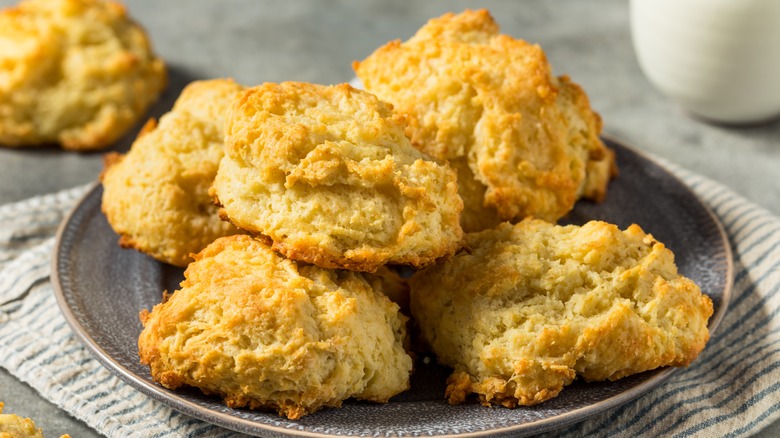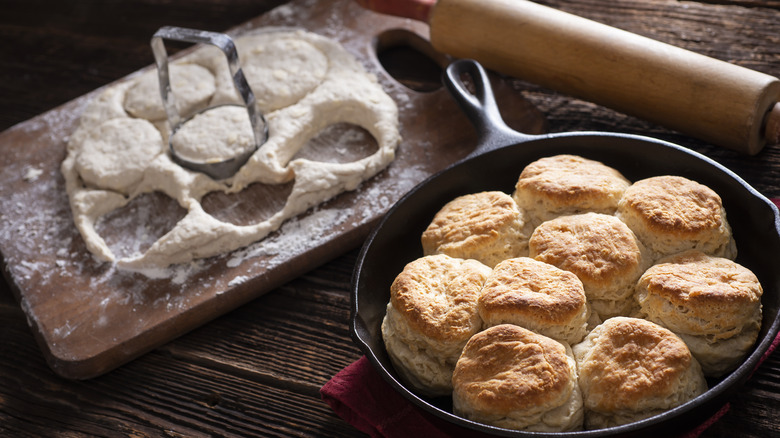How To Determine When To Make Drop Biscuits Vs Roll-And-Cut
As one of the most beloved recipes in the American South, biscuits are the buttery, indulgent quick breads that can be incorporated into every meal and snack. While biscuits distinguish themselves from other types of bread with their high-fat content and lack of yeast, there are also different types of biscuits. Two well-known types, drop and roll-and-cut biscuits, refer to the techniques used to form them. These distinct preparation styles result in markedly different textures, which play a big role in how to determine which type to use.
Drop biscuits have a more fluid batter and are made by simply scooping the batter out of the mixing bowl and dropping it onto a baking sheet. Roll-and-cut biscuits have a firmer, more compact dough rolled out and cut into flat-topped circles. Drop biscuits have a dense, crusty, and crumbly consistency, whereas roll-and-cut biscuits are light, fluffy, and flaky.
Since roll-and-cut biscuits hold their shape better and have a fluffier crumb, they'd work best for biscuit sandwiches and as a flaky topping for pot pies or casseroles. They'll remain intact containers for sandwich ingredients and a light, flaky contrast to rich, heavy casserole fillings. Drop biscuits' hefty and crumbly texture makes them more suited to eat on their own with a drizzle of honey or butter. Their crusty, crumbly texture also helps them absorb and blend seamlessly into a creamy, chewy sausage gravy. They're also a common foundation for strawberry shortcake.
Yet another determinant: difficulty
Despite their textural differences, both drop biscuits and roll-and-cut biscuits deliver an ultra-savory, decadently buttery flavor. However, another important determinant of which type to make is the level of difficulty and time constraints. Drop biscuits are much easier and faster to make than cut-and-roll biscuits, which require significant skill, not to mention the tedious process of kneading, rolling, and cutting the dough. If you are up for the challenge and have the time to devote to a more demanding procedure, roll-and-cut biscuits are a worthy feat.
Drop biscuits require no fancy equipment nor kneading, and their thinner dough is less likely to be overworked, which is a common mistake that results in tough cut-and-roll biscuits. While it's hard to beat the fluffy on the inside and crispy on the outside texture that cut-and-roll biscuits are known for, they're a lot more finicky to make.
So, if you're a first-time baker, you might want to start with drop biscuits. The good news is that they lend well to additional ingredients, which also serve to alter their texture. For example, cheddar cheese and chive drop biscuits would bring a creamy, gooey depth of texture, dotted with bright bits of aromatic crunch. Furthermore, adding cold, grated butter to the batter will amp up the tenderness of their crumb.

